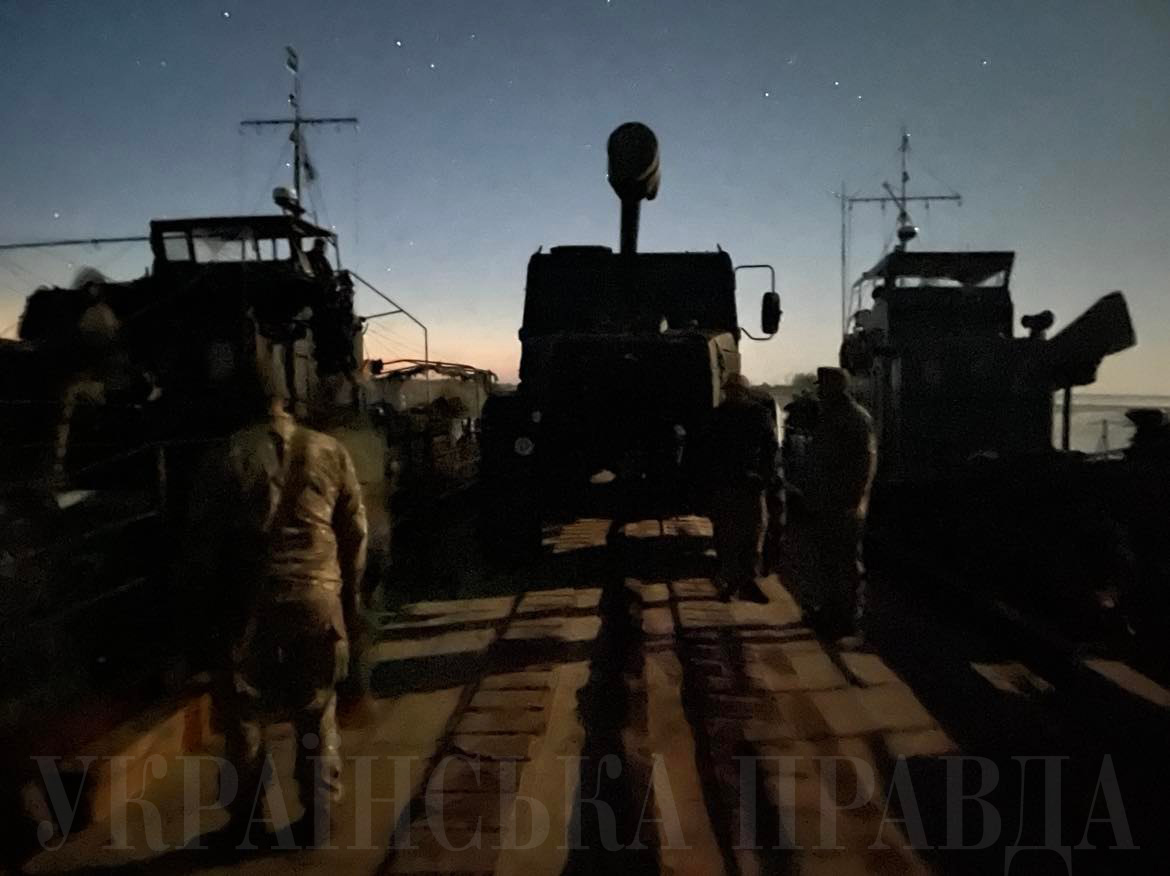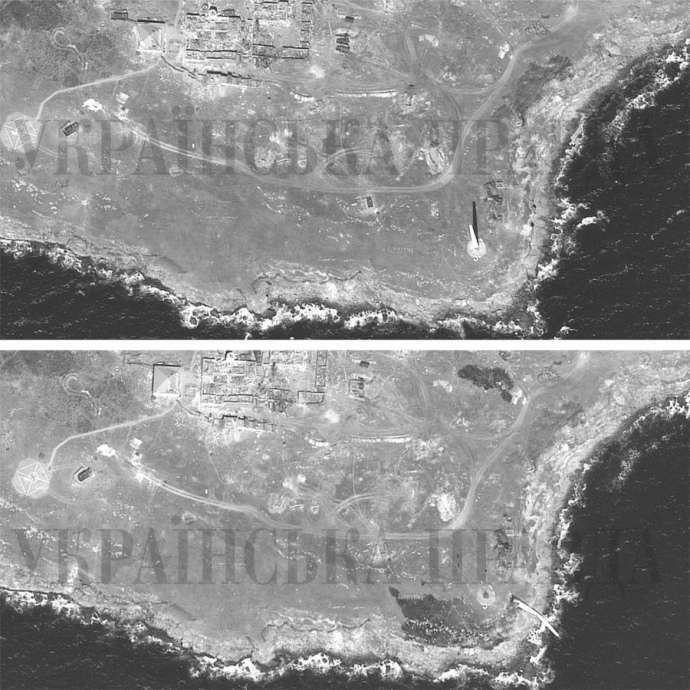Snake Island liberation. Journalists published details of Bohdana self-propelled howitzer’s first combat mission
13 February, 2023 Bohdana self-propelled howitzer in position during the shelling of Snake Island, June 2022. Photo credits: Ukrainska Pravda Ukrainian artillery destroyed the forces of the Russian Federation on Snake Island from the shore near the city of Vylkove.
The distance from the coastline to the island was 40 km. Journalists of Ukrainska Pravda told about the combat work of the Bohdana self-propelled howitzer during the liberation of Snake Island. The French CAESAR ACS worked alongside the Ukrainian self-propelled howitzer.
The system was lowered to the seashore through sand in order to effectively strike. This is the first combat mission of the Ukrainian Bohdana self-propelled howitzer. Prior to this, the artillery system was used for the defense of the Kryvyi Rih direction.
This was the combat coordination of the crew.
 Shell hitting of the Snake Island, June 2022. Photo credits: Ukrainska Pravda
Shell hitting of the Snake Island, June 2022. Photo credits: Ukrainska Pravda
Arrangement of positions
The delivery of equipment to the positions became a separate operation, since heavy equipment could not move freely on the shoals and sand. Each night, Bohdana and CAESAR ACS were driven onto floating platforms and fused the Danube River and its branches to the positions for 3-4 hours one way.
Pontoons were too high to easily move from shore to shore. Therefore, local border guards found a special water crane that can adjust the shore.
 Pontoon crossings used to transport self-propelled guns to positions, June 2022. Photo credits: Ukrainska Pravda
Pontoon crossings used to transport self-propelled guns to positions, June 2022. Photo credits: Ukrainska Pravda
For several days, crews arranged positions and organized caches.
Metal objects were hung on trees along the position so that the Russian radar did not detect the artillery. When the Russians turned on the radars (and they reacted to the metal), they "glowed" the whole coast at once. Thus, it was far more difficult to locate two, albeit massive, self-propelled howitzers on the riverfront plains, according to the article.
The problems began on the very first day: after the first three shots, the sealing rings in the barrel burned out in the Bohdana self-propelled howitzer. And Caesar gave up after the first 20 shots; the oil began to flow. While the military resolved the issue of repairing artillery systems, the Russian military launched a missile attack on the positions, but missed by several kilometers.
Fire adjustment
The next problem of the Ukrainian military was the adjustment of fire.
Civilian UAVs used by the military to monitor Snake Island from the shore could not fly out to sea, because the Russian EW was actively working. The island was also watched from the Bayraktar UAV, but its picture was not clear, since the drone could not fly closer than 28-30 kilometers: it fell into the range of enemy air defense.
 Snake Island "before" and "after" artillery work, June 2022. Photo credits: Ukrainska Pravda
Snake Island "before" and "after" artillery work, June 2022. Photo credits: Ukrainska Pravda
In addition, the pictures from drones such as Matrix and Mavic were directly seen by the self-propelled howitzer's crew, and images from Bayraktar were received at the headquarters of the South Operative Command, which coordinated attacks from there.
The military had a detailed map of Russian equipment locations on Snake Island, so the accuracy of the hit was important.
 Map of Snake Island, June 2022. Photo credits: Ukrainska Pravda
Map of Snake Island, June 2022. Photo credits: Ukrainska Pravda
After the first days of operation, the crew realized that it could adjust the hit with an accuracy of 20 meters. "It became especially easy when we smashed the radar and their air defense.
It exploded so beautifully and was exploding for a long time! And then we realized that nothing was jamming the drone signal," said Yevhen Grushovets, Bohdana's gunner. Artillery crews were separated far from each other and worked in shifts: a little CAESAR ACS fire and hide, then - Uragan MLRS, after that - Bohdana.
The shells' remains were quickly removed so as not to reveal the location.
Liberation of Snake Island
The artillery operated on this principle for more than a week - from June 21 to 30. On the day of the island's liberation, June 30, only Bohdana self-propelled howitzer worked. It is noted that in fact each shot hit the island.
The crew had 50 rounds "per shift" that day.